Table of Contents
Are you looking for a premium luxury option that offers versatility, durability and customizability in a lightweight container perfect for foods, cosmetics, and more? Metal tin boxes fit this bill and have been a popular packaging choice for decades. So, if you’re considering this premium option for your next big packaging project, you’ve come to the right place!
In this guide, we will show you the ins and outs of the metal tin and break down everything you need to know before starting your next packaging project.
What Are Tin Boxes?
Tin container packaging is a type of metal packaging that offers high durability and a variety of unique customizations, such as metallic reflection, varnishes, coatings, embossing and debossing, premium printing techniques, and textures.
However, it is essential to note that while aluminium tin packaging is sometimes used as an interchangeable term with tin containers and boxes, the two are vastly different. In this guide, we will focus specifically on tin packaging.
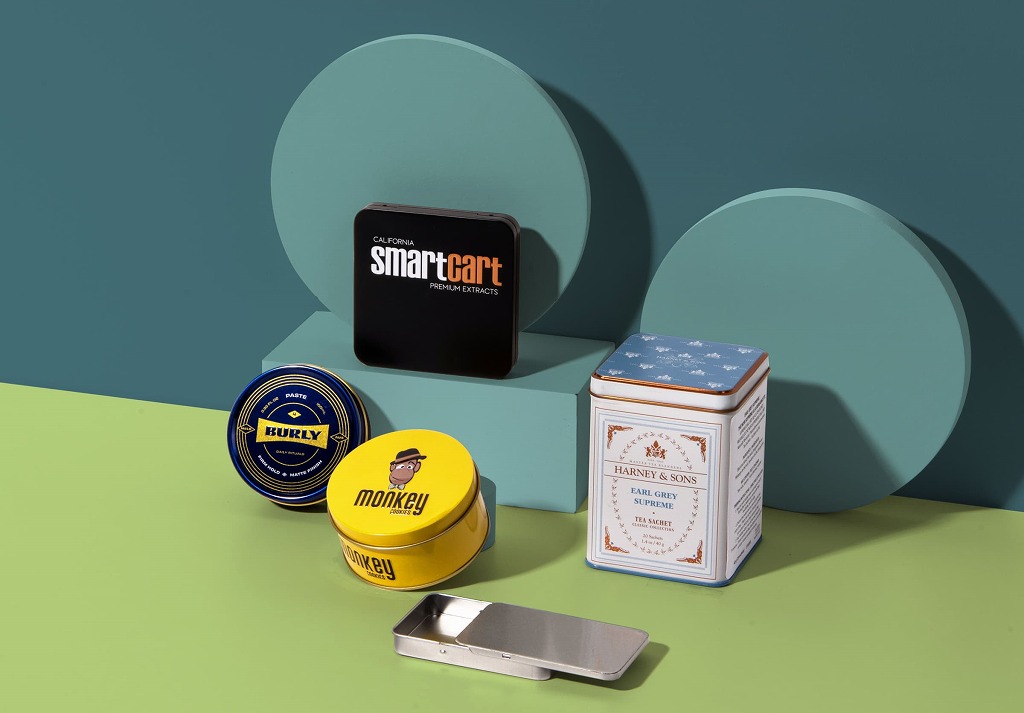
The Advantages and Disadvantages of Tin Packaging
While tin containers can elevate how you present your product to your customers, tin packaging might not always be the best fit for a product. So, before we delve deeper, let’s consider the benefits and disadvantages of custom metal tin packaging. We will only cover the main points in this guide, but if you want to read more about the pros and cons of tin containers, click here.
The Pros of Tin Containers
Many benefits come with using a tin box for your packaging. Some of the main advantages include;
- Durability and Strength: Tin packaging is an excellent choice for protecting your products from damage during storage, transportation, and handling.
- Extended Shelf Life: Tin container packaging protects against physical damage and provides an effective barrier against light, moisture, and oxygen, helping products maintain freshness and flavor much longer.
- Premium Aesthetic Appeal: With their high metallic luster and deep customizability, tin boxes make your brand stand out from the competition.
- Reusability and Recyclability: Tin boxes made from tinplate or steel are recyclable and can be melted down to form new metal products. With high-quality features like magnetic closures or lids accompanying its premium aesthetic appeal, consumers are likely to keep the container for other purposes, further extending the life of your tin.
- Versatility: We mentioned deep customizability, which also applies to the tin’s shape. Tin containers can be molded into various shapes and sizes, catering to different product requirements and applications.
The Cons of Tin Containers
Any type of packaging will always have a set of cons, and tin packaging is no different. The main disadvantages of this type of packaging are:
- Cost: Tin packaging is more expensive than plastic or cardboard. Furthermore, a custom mold for uniquely shaped containers can significantly raise prices.
- Weight: Though tin is lightweight, it is still heavier than many other packaging materials, which may further increase shipping costs.
- Rust & Corrosion: If not correctly coated or lined, the container may rust or corrode when exposed to moisture or acidic products.
Common Misconceptions About Tin Packaging
Despite the wide use of tin packaging over the years, some misconceptions about it tend to deter people from using it.
“Tin containers are costly.”
One of the most common misconceptions is that tin containers are costly. While it is true that tin packaging can be more expensive than other materials, it definitely won’t break the bank! Its durability and longevity make it worth the investment, bringing us to our next misconception.
“Tin packaging is not eco-friendly.”
Many people think that tin is not eco-friendly. This is somewhat true, given the requirement of advanced manufacturing processes, but tin still produces less carbon footprint than plastic. Furthermore, tin is entirely recyclable and contributes to a circular economy, making it much more environmentally friendly than people might believe.
“Tin box is prone to rust.”
Finally, the last misconception we will cover is that tin is prone to rust. In the disadvantages section, we mentioned rust and corrosion as a possibility. However, this only applies if the container is coated incorrectly. Tin is a pure metal and does not rust. What does rust is the core metal underneath the tin. If your container is coated correctly by a professional, it will not rust!
So Is Tin Packaging Right for Your Product?
Considering the benefits, disadvantages and misconceptions, you might still be unsure about using tin in your next packaging project. The simplest way to determine if it is right for you is to consider what you’re looking for in a package.
Do you want brand recognition and differentiation from competitors? Do you want to increase your product’s perceived value in the customer’s eyes? Are you looking for a packaging option that offers excellent protection and can fit your product’s specifications with custom shapes and sizes?
If you answered yes to the above questions, then tin containers are definitely an option you should consider, so let’s continue!
Popular Tin Shapes
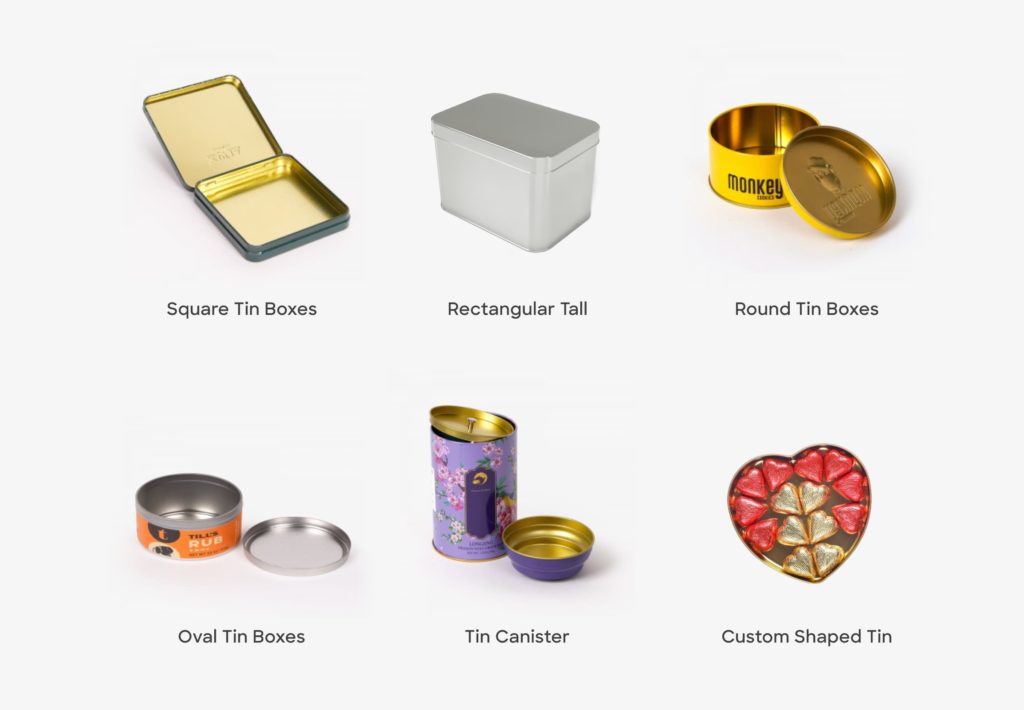
We mentioned that tin can come in various sizes and shapes. In this section, let’s examine the many options available to you.
Rectangular & Square Tin Box
Rectangular tins are the most classic option available. They are simple and straightforward, making them the standard for tin containers. The rectangular shape also makes them ideal for stacking, allowing easy storage and transport.
Oval & Round Tin Containers
Round or oval containers are another staple for tins. While they are less storage efficient than square tins, they provide extra aesthetic charm and a sense of sophisticated luxury that more than makes up for this shortcoming.
Custom Shaped Tin Canister
If none of the above suits your taste, tin containers are also available in custom shapes, limited only by your imagination! Some examples of possible shapes include suitcases, books, cylinders, or hearts.
Tin Styles, Options and Accessories
Not only can you choose the shape of your tin, but there are also many different stylistic options, ranging from providing extra protection for your product to boosting the aesthetic appeal of your package even more. Let’s look at the various options available when designing your tin.
Tin Lid Styles
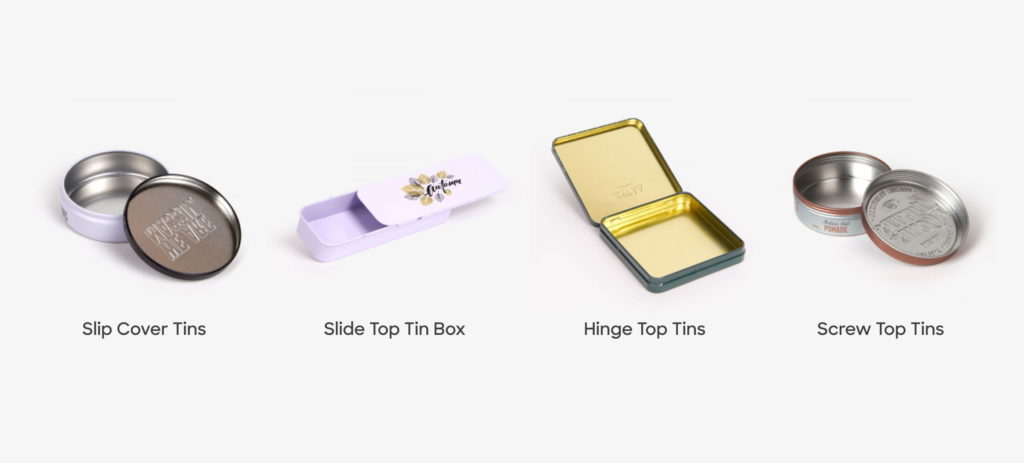
The first option you can customize is the lid of your container. Some popular options include;
- Slipcovers: These are hemmed or curled-edged lids that fit snugly over your container without twisting shut. They can also feature transparent acrylic that lets consumers see what is inside. Slipcovers are seamless, leak-free, and suitable for ointments, cosmetics, and more.
- Slide Top / Sliding Lids: As the name suggests, this option can easily be opened or closed by sliding the lid on or off. Slide tops are ideal for storing candies and mints.
- Hinged Lid / Hinge Top Tins: This lid style is affixed to the container on one end by a moveable joint and can be opened by simply lifting the lid. Hinged lids can also shut tightly to prevent contaminants and spills, making them ideal for plant-based products like tea leaves, tobacco, or cannabis.
- Screw Top Tins / Screw Caps: Screw caps are similar to the slipcover, except you must twist the lid to open or close it. Screw caps can also feature acrylic windows and offers additional security by ensuring the lid is secure. Screw caps are also ideal for ointments and cosmetics.
Interior Accessories for Your Tin
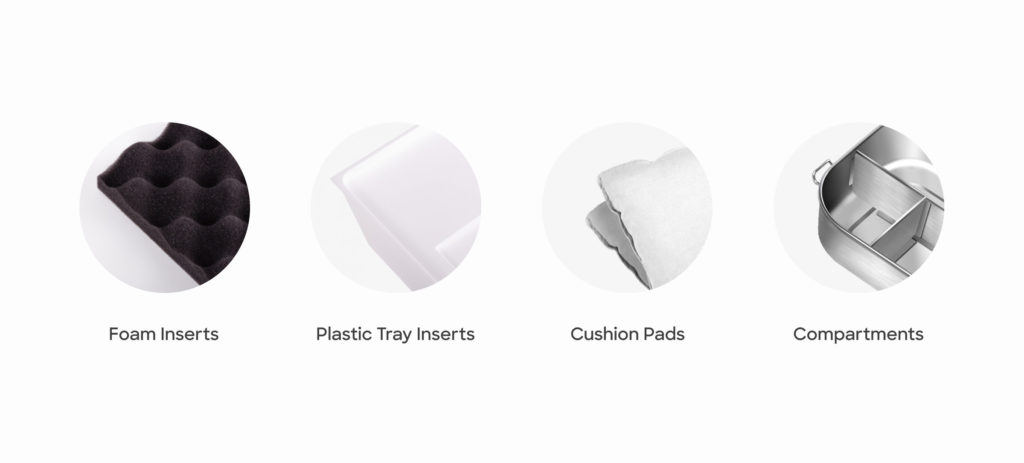
Aside from choosing the lid style of your tin package, you may also add accessories to go inside your tin container. Some accessories you might consider are;
- Foam Inserts: Create a premium look and feel inside your container while adding extra protection for good measure.
- Plastic Tray Inserts: Keep your products in place while remaining lightweight and customizable with various colors.
- Cushion Pads: Food-safe and sustainable paper cushion pads keep food products fresh and protected.
- Compartments: Organize your container into different sections with the addition of metal separators.
Preservation & Safety
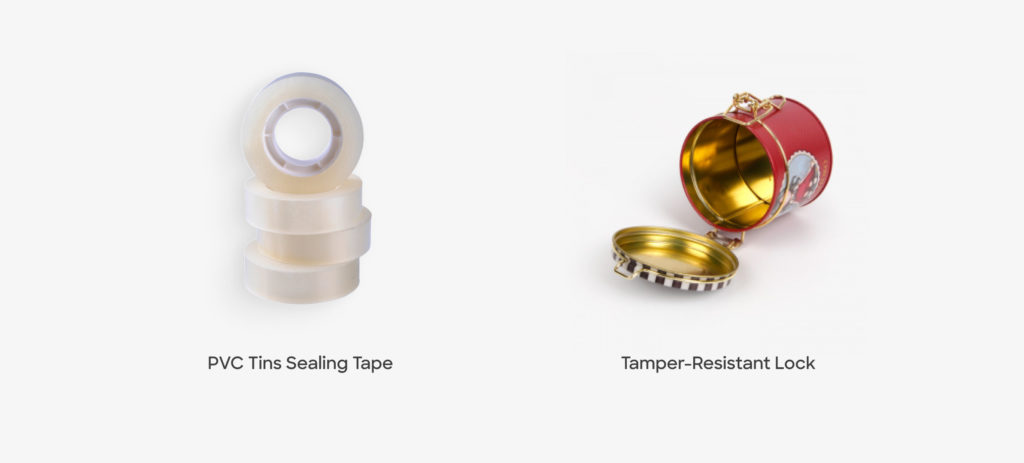
If you’re looking for added food safety for your tin, you may also consider options such as;
- PVC Tin Sealing Tape: A type of adhesive tape specifically designed for sealing the lids of tin cans and protecting the contents within from contamination.
- Tamper-Resistant Locks: A locking mechanism installed on the lid and body of the container provides extra resistance against unintentional opening or tampering.
Promotional / Merchandising
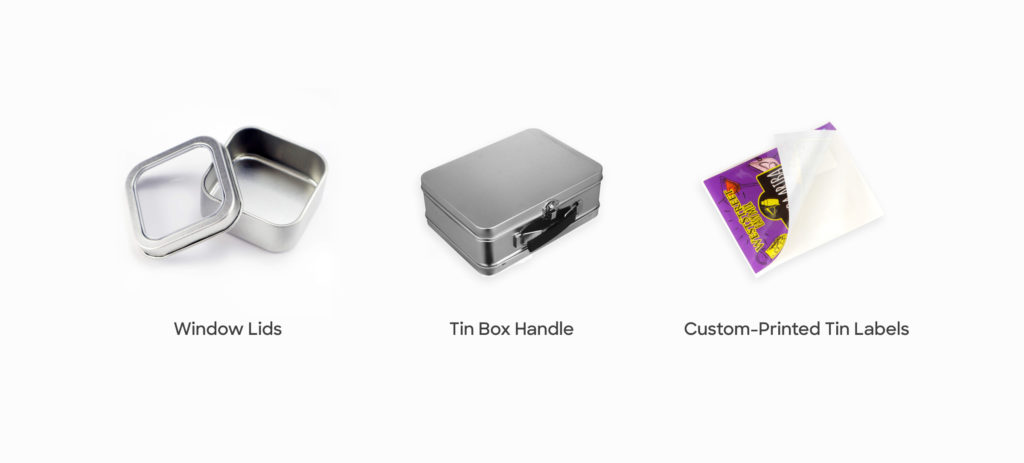
Finally, promotional and merchandising options are also available, in addition to the plethora of other customizations you can choose from.
- Window Lids / See-Through Lids: Mentioned in the lid styles section, it is worth mentioning again to emphasize how appealing it is for customers to see the product inside.
- Handles: Adding a handle to your tin provides a convenient way for customers to carry your product anywhere.
- Custom Printed Tin Packaging Labels: Add extra brand personality to your tin with a custom-made label.
Types of Tin Materials
Earlier in this guide, we mentioned that tin boxes should not be confused with aluminium; they are two different metals with differing properties. However, the truth is that tin containers aren’t just made of tin! Let’s break down some standard types of materials these containers can come in.
- Tinplate/ Tin-Plated Steel: This material has a core of steel or iron and a thin layer of tin coating. It helps prevent rust and corrosion while enhancing the container’s durability. Tinplate provides a smooth and shiny surface that can support printing and decoration. Typical applications for this material include food packaging, cosmetics, and gifts.
- Frosted Iron: Frosted iron has a matte, slightly rough texture that differentiates it from a typical tinplate. It has a unique visual appeal, is non-reflective, and is highly durable, providing customers with a premium look and feel. Frosted iron is the best fit for premium items looking for a sophisticated presentation.
- Pure Tin: Contrary to its name, using pure tin is rare for tin containers due to its higher cost and lower strength than the other options. However, pure tin offers excellent corrosion resistance, is non-toxic, and is perfect for high-end, specialized, or limited-edition items.
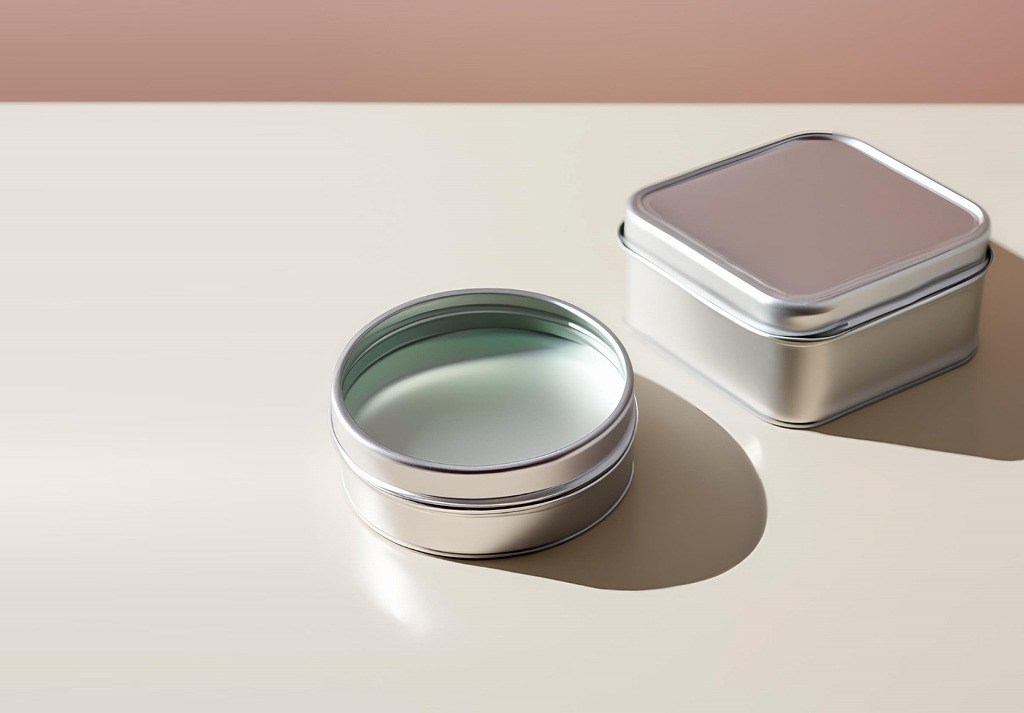
Printing On Tin: Surface Finishes
Printing on a tin container lets you personalize it with custom designs or your brand logo, creating a truly unique packaging experience that your customers will love. And like all other customizations in this guide, there are many options regarding the surface finish you may want on your tin box.
- Lithography (Offset Printing): This printing technique is common in food packaging, promotional tins, and gift boxes. It transfers an image from a metal plate to a rubber blanket and then onto the surface of your tin. Lithography offers high-quality, detailed images that are cost-effective for high-volume runs.
- Screen Printing: Also referred to as Silk-Screen Printing. It is commonly used for limited edition designs and custom logos. This printing technique applies a versatile variety of ink directly onto the tin through a mesh screen, allowing for bold colors and large areas of solid color.
- Digital Printing: Works best for short runs or personalized designs. Using digital files to print images directly onto a tin, this printing technique offers a fast turnaround and is very cost-effective for smaller batches.
- Embossing and Debossing: This surface finish technique adds a raised (emboss) or recessed (deboss) 3D look to your tin. It is perfect if you are looking to create premium packaging for luxury goods or enhance your branding elements. Embossing and Debossing add extra tactile dimension to your tin, enhances the visual appeal, and can be used with other printing techniques.
- Flexographic Printing: Using flexible relief plates to print on a surface allows for fast production of continuous patterns and simple designs in large volumes. This type of printing is best used for mass production, labels, and simple graphics.
- Pad Printing: This printing method transfers ink from a silicone pad onto the tin surface, making it suitable for irregular shapes, intricate logo designs, and various surface textures.
- UV Printing: UV light cures ink as it is printed onto the tin. This allows for quick drying, high durability, and vibrant colors suitable for detailed images and designs.
- Hot Stamping: Using heat and foil to apply metallic designs onto a tin provides a luxurious finish suitable for premium products, eye-catching brand elements, and decorative finishes.
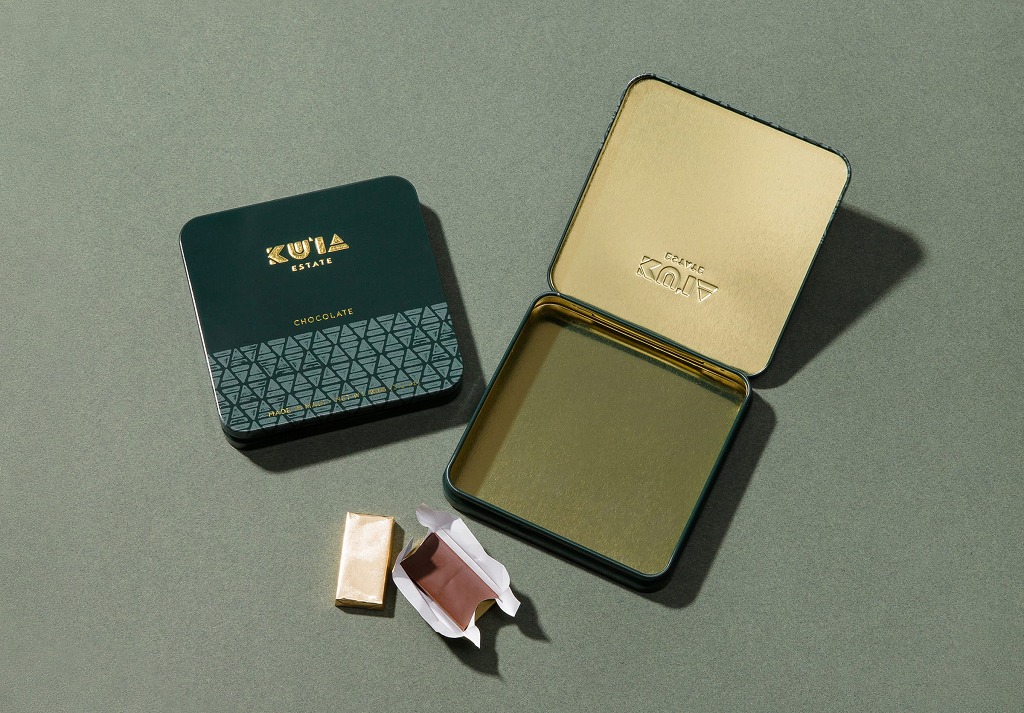
How Are Tin Boxes Made
Now that you’ve reviewed all the wonderful options for your tin box, it’s time to get down to the nitty-gritty and actually create your container!
Brands often turn to tin packaging manufacturers during this step, as they are the professionals who will provide the highest-quality solutions for their projects. Still, it is worth understanding all the production process steps to know what you are getting.
Step 1: Choosing Your Sheet
The first step is to choose your tinplate sheet. Tinplate can come in varying thicknesses, contributing to durability and printing quality. Once you’ve selected a tinplate, the manufacturer will cut the sheets using cutting machines to prepare them for the next steps.
Step 2: Printing and Coating
The printing and coating step comes next and involves applying your custom designs and protective varnishes to the cut sheets of tinplate material.
Step 3: Forming and Final Assembly
After applying your custom designs to the material, the sheets are formed using stamping and forming machines. These machines shape the material into the different parts of your tin box, including the lid, body, and base.
When all components are formed, the container is assembled using mechanical interlocking or welding to create the final structure. Seaming is then performed on the structure to seal the edges, ensuring a tight fit, structural integrity, and leak prevention.
Step 4: Quality Control
Finally, after completing your tin, a quality control inspection of the box ensures that standards are met and no defects are found.
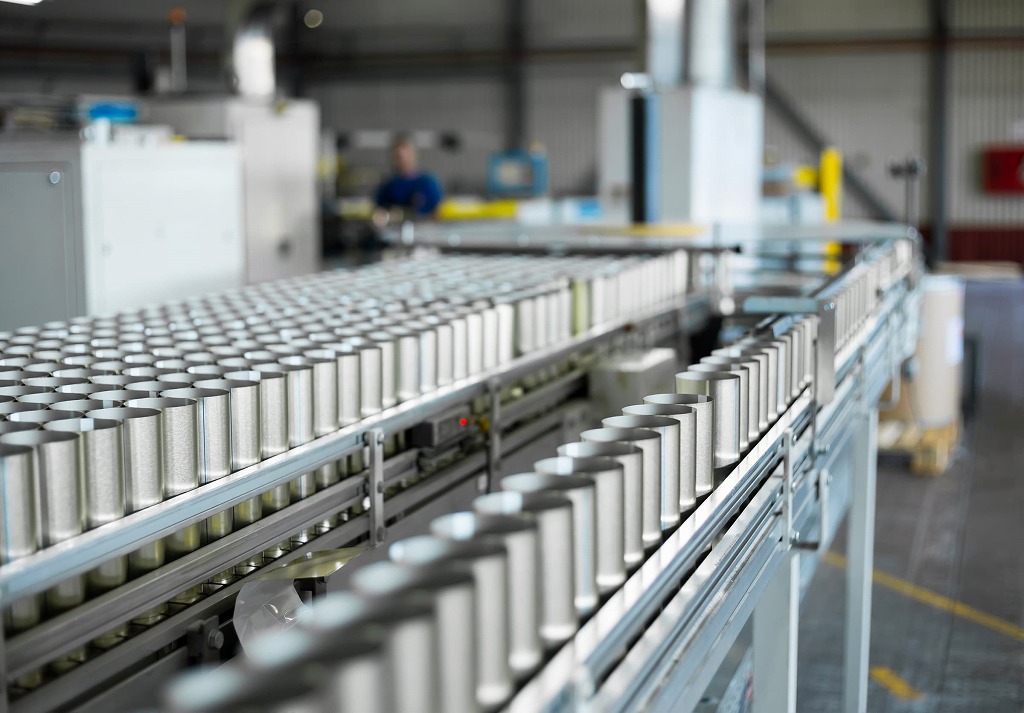
What Works With Tin Containers?
While the use of tin containers is close to limitless, there are a few products that work exceptionally well with tin.
- Food & Beverage: Tin is extensively used and safe for food packaging, and it is arguably the most common industry in which these containers are used. From cookies to coffee tin packaging, tin containers are a go-to option.
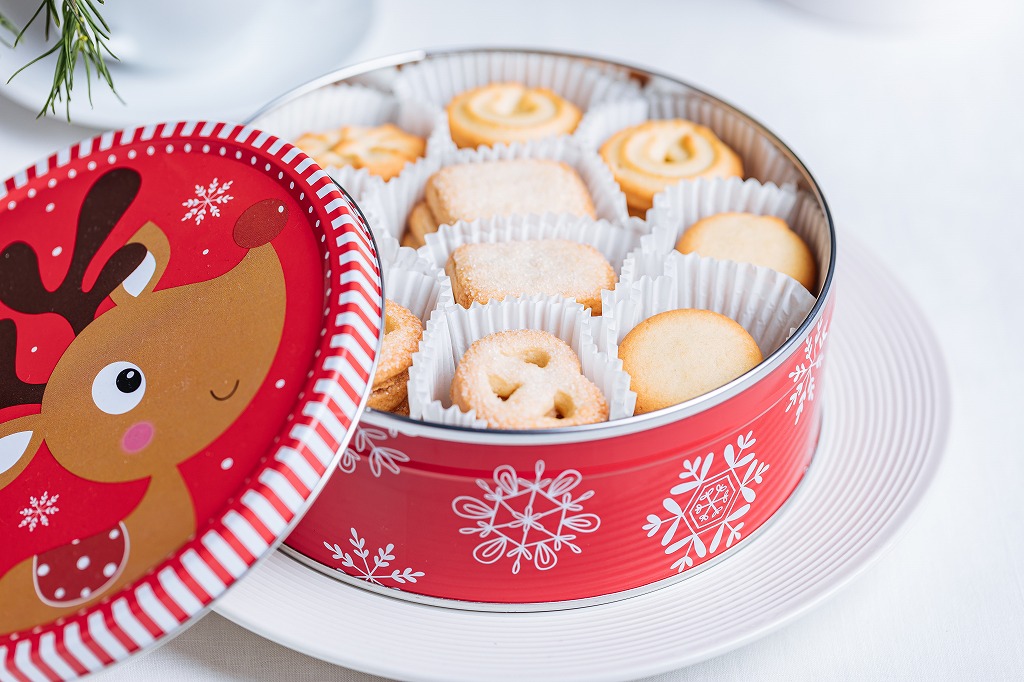
- Cosmetics & Personal Care: The cosmetic & personal care industry is another industry that works well with tin. From lip balms, perfumes and soaps, the portable and compact nature of tin cosmetic packaging makes it ideal for travel and on-the-go use.
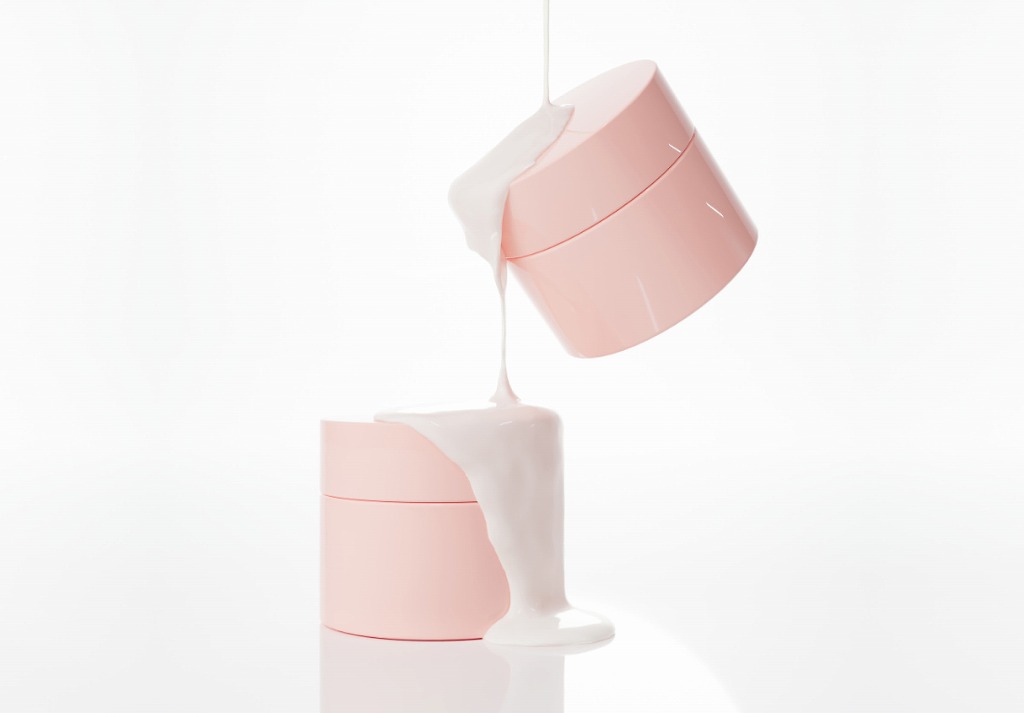
- Gifts and Promotional Items: With luxurious looks, distinctive shapes, and versatile printing options, tin containers are an excellent way to package gifts or other promotional items.
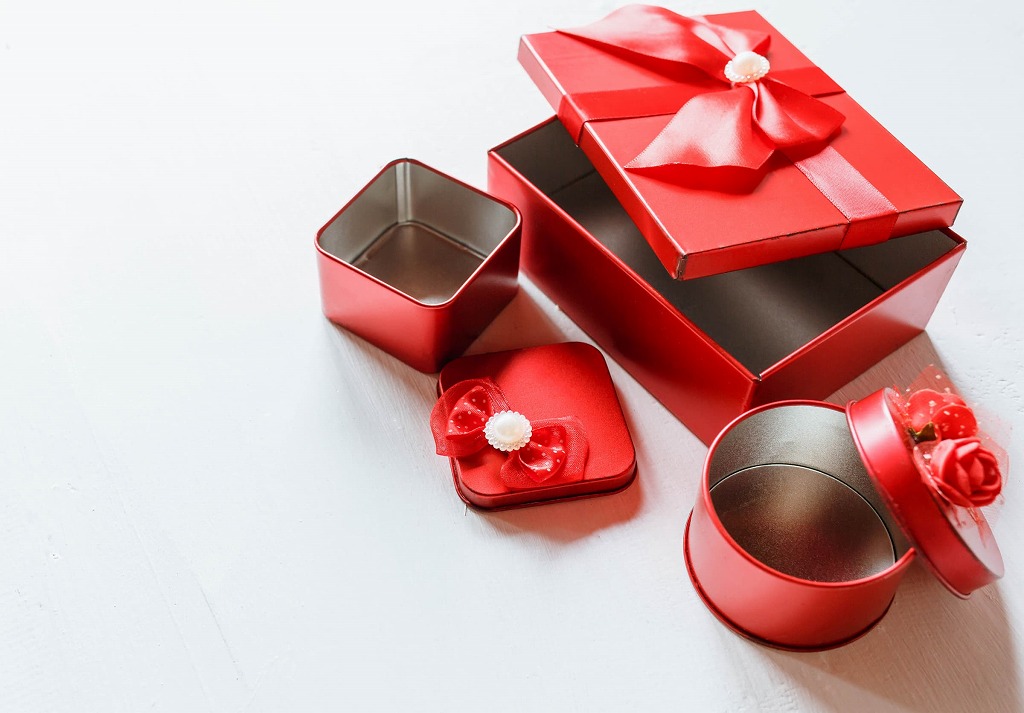
Looking to Begin Your Tin Box Project?
The products mentioned above are tried and true regarding tin packaging, but that doesn’t mean other products can’t work either! The best part of custom packaging is the ability to experiment and let your imagination run wild, so get inspired with our tin packaging catalog!
Or, if you’ve made up your mind and are looking for a partner to start your journey with custom tin can packaging, PakFactory can help. Let’s build something great together!





